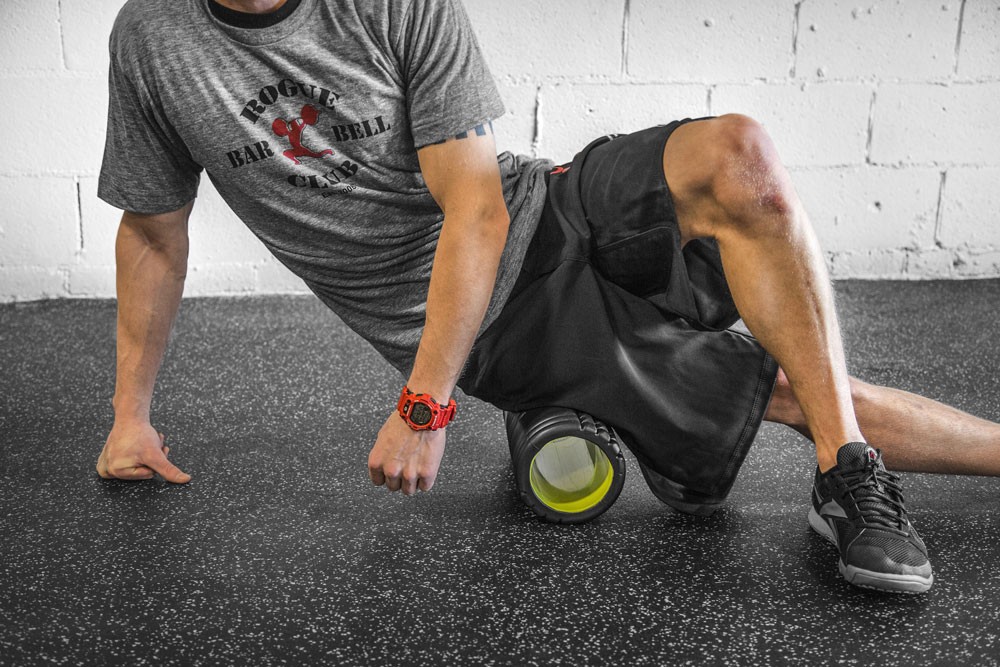By Steve Novencido MA, CSCS, USATF II, PES, FMS
While working as a Strength & Conditioning Coach at IMG Academy, one of the premier academic and athletic institutions in the world, I have become familiar with the many recovery and restoration methods. These methods are paramount in developing young athletes as well as keeping them fresh and injury free for their sports. With state-of-the-art equipment and world-class regeneration and recovery techniques, IMG Academy provides advantages rivaling other facilities, such as; pool therapy, hyperbaric chambers, Normatec boots, ice tubs, electro stimulation, the TriggerPoint™ GRID® Foam Roller and Total Body Kit, but most importantly, coaches who implement proper stretching protocols before and after training as well as utilizing the aforementioned tools within their programs to aid in recovery.
Aside from building strength, speed and power, injury prevention and restoration are a primary focus with regards to developing young athletes. The purpose of this article is to highlight the advantages of foam rolling for prevention of injuries and recovery of athletes when integrating its methods within an exercise program.
Although in the hierarchy of massage, soft tissue therapy or myofascial release techniques would be the most beneficial, foam rolling provides a much quicker and convenient way to begin or end an exercise session.
Soft tissue methods such as Muscle Activation (MAT), Active Release Techniques (ART), Graston, and foam rolling increases pressure to the tissue which may cause a chemical reaction and sometimes painful irritation. This irritation, however, is usually short-term and often promotes long-term positive outcomes, such as the dissipation of trigger points (soreness) and postural correction, the aiding in recovery, rehabilitation, and injury prevention.
When thinking about injury prevention, posture should be taken into consideration; good posture equals good body alignment. Good alignment includes keeping the head in neutral alignment, the shoulder blades back and down, the palms rotated anteriorly (thumbs out), the pelvis neutral and knees forward.
When the body is in bad alignment, the likelihood of injury is exponentially increased due to compensation. Bad posture equates to bad body alignment. When stabilizing muscles are stretched, it weakens them, causing other muscles to go under heavier stress from the load, which could then lead to misuse or compensation. Compensating muscles often tire easily making them more susceptible to injury. Bad posture is affected by many factors, including genetics, hand dominance, past and current injuries, illness, emotional stress, sitting in front of a computer for extended periods of time, texting, driving, wearing a back pack, etc.. Soft tissue therapy, massage and foam rolling are sound methods to aid in bringing the body back into good alignment.
Foam rolling is the first step in the preparatory process to prepare the tissue or muscles for the stresses (exercises) about to be applied. Put simply, foam rollers are used so that athletes have the ability to stretch, move, and maintain strength. A general rule of thumb is to foam roll before a workout session, but it can be used afterwards as well to treat muscle soreness.
In order to take advantage of the soft tissue therapy and myofascial release benefits of foam rolling, proper sequence and reps is paramount. First, find the trigger point or small section of muscle that acts differently than the rest of the muscle with regards to soreness. This area is usually sensitive to pressure resulting in pain or burning when compressed. Trigger points will often over ride stretching so be sure to manage these areas first so that stretching will have an effect on the muscle. Once the area is on the foam roller, imagine the muscle melting over the foam roller to help relax the muscle before beginning the rolling process. Second, roll between 5-10 times per muscle area as a general rule of thumb. Once the trigger point fades consider the area treated but continue the dynamic or static stretching protocols you would normally do before or after your lift or movement sessions. Be sure to breathe during each pass to ensure your muscles do not tighten up and cause increased discomfort.
Foam rolling can be used as a quick recovery from a training session, an exercise bout, a speed session, a sport specific movement session, or as an addition to a regeneration session. Foam rolling can have profound effects on the muscle tissue with regards to growth and recovery.
Research has shown that delayed onset muscle soreness (DOMS) will not only delay muscle recovery but can be uncomfortable during training sessions following the session in which the DOMS was elicited.
Although soft tissue release methods can be painful, it is still far better to feel the discomfort of massage or foam rolling than the discomfort and lasting effects of DOMS. Foam rolling is a tool that may not be as aggressive as other soft tissue techniques, with regards to myofascial release and massage, but it certainly is more economical and will produce the long-term effects needed and associated with recovery and an essential means to prevent injuries.

